
HMS Imperial was one of nine I-class destroyers built for the Royal Navy during the 1930s. She was scuttled by HMS Hotspur in 1941 after she had been crippled by Italian bombers.
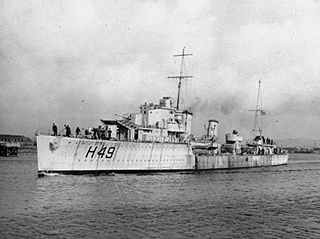
HMS Inconstant was an I-class destroyer built for the Turkish Navy, but was purchased by the Royal Navy in 1939.

ORP Orkan, formerly HMS Myrmidon was an M-class destroyer of the Polish Navy during World War II. The name translates as "windstorm". She was sunk by the German submarine U-378 on 8 October 1943. There were 179 dead and 44 survivors.

HMS Raider was a R-class destroyer built for the Royal Navy during the Second World War.

HMS Penn was a P-class destroyer built for the Royal Navy during the Second World War.
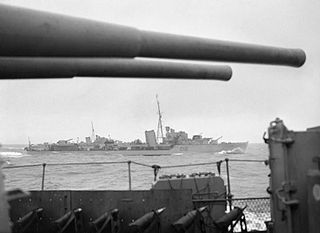
HMS Kashmir (F12) was a K-class destroyer built for the Royal Navy during the 1930s, named after the princely state of Kashmir in British India.

HMS Racehorse was a R-class destroyer built for the Royal Navy during the Second World War.

HMS Redoubt was an R-class destroyer built for the Royal Navy during the Second World War.

HNLMS Van Galen was a N-class destroyer built for the Royal Navy during the Second World War and transferred to the Royal Netherlands Navy shortly after completion. The Dutch changed the pennant numbers several times G-84, J-3, JT-3, and D-803.
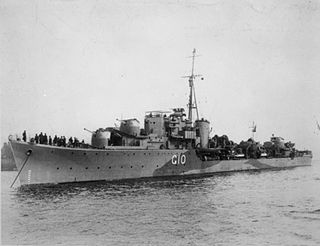
HMS Pathfinder was a P-class destroyer built for the Royal Navy during the Second World War. She was damaged while serving in the Far East, and was scrapped after the end of the war.

HMS Milne was a M-class destroyer of the Royal Navy which served during World War II. She was equipped as a flotilla leader.
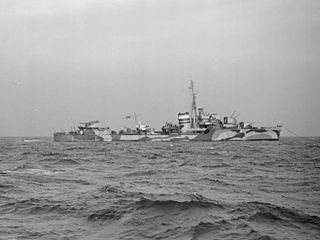
HMS Loyal was a L-class destroyer built for the Royal Navy in the late 1930s, although she was not completed until after World War II had begun.
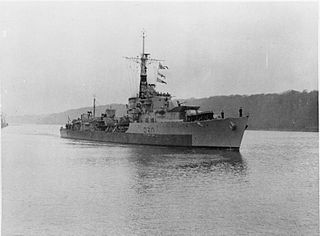
HMS Carron was one of thirty-two C-class destroyers built for the Royal Navy during the Second World War, a member of the eight-ship Ca sub-class. Commissioned in late 1944, she was assigned to the Home Fleet and escorted the fleet's larger ships during operations off German-occupied Norway. Carron was sold for scrap in 1967.

HMS Cavendish was one of eight C-class destroyers built for the Royal Navy during the Second World War. Commissioned in late 1944, she was built as a flotilla leader with additional accommodation for staff officers. The ship was assigned to the Home Fleet in 1945 after working up where she escorted capital ships of the fleet. Cavendish was sold for scrap in 1967.

HMS Cambrian was one of eight C-class destroyers built for the Royal Navy during the Second World War. commissioned in mid-1944, she was assigned to the Home Fleet and escorted two Arctic convoys as well as larger elements of the fleet during operations off the German-occupied Norwegian coast.

HMS Caesar was one of thirty-two C-class destroyers built for the Royal Navy during the Second World War, a member of the eight-ship Ca sub-class. Commissioned in 1944, she was built as a flotilla leader with additional accommodation for staff officers. The ship was assigned to Home Fleet during 1944–1945 and escorted one Arctic convoy as well as the capital ships of the fleet.

HMS Cheviot was one of thirty-two C-class destroyers built for the Royal Navy during the Second World War, a member of the eight-ship Ch sub-class. Completed after the war, she was sold for scrap in 1962.

HMS Childers was one of thirty-two C-class destroyers built for the Royal Navy during the Second World War, a member of the eight-ship Ch sub-class. Commissioned in 1945, she was built as a flotilla leader with additional accommodation for staff officers.

HMS Chivalrous was one of thirty-two C-class destroyers built for the Royal Navy during the Second World War, a member of the eight-ship Ch sub-class. Commissioned in 1946, she was built as a flotilla leader with additional accommodation for staff officers. The ship was loaned to the Pakistani Navy during the late 1950s and was sold for scrap in 1961 after being returned.

HMS Comet was one of thirty-two C-class destroyers built for the Royal Navy during the Second World War, a member of the eight-ship Co sub-class.




















